#lycaon icons
Text




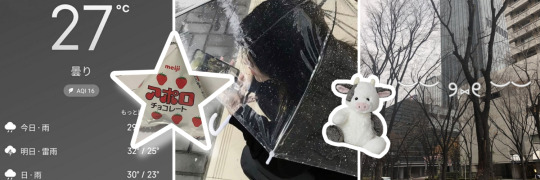


࣭ 🐺 💭 ⚝ 𓈒 ۫ hear me out . . .ㅤㅤㅤ
#͏ ͏ ͏ ͏ ͏ ͏ ͏ ͏ ͏ ͏ ͏ ͏ ͏ ͏ ͏ ͏ ͏ ͏ ͏ ͏ ͏ ͏ ͏ ͏ ͏ ͏ ͏ ͏ ͏ ͏ ͏ ͏ ͏ ͏ ͏ ͏ ͏ ͏ ͏ ͏ ͏ ͏ ͏ ͏ ͏ ͏ ͏ ͏ ͏ ͏ ͏ ͏ ͏ ͏ ͏ ͏ ͏ ͏ ͏ ͏ ͏ ͏ ͏ ͏ ͏ ͏ ͏ ͏#𝅄︶ ͝ ⏝ ⊹ ⏝ ͝ ︶𝅄#zzzero#zzzero layouts#zzzero icons#lycaon layouts#von lycaon layouts#von lycaon icons#von lycaon#lycaon icons#messy layouts#random headers#twitter headers#black white headers#headers
75 notes
·
View notes
Text

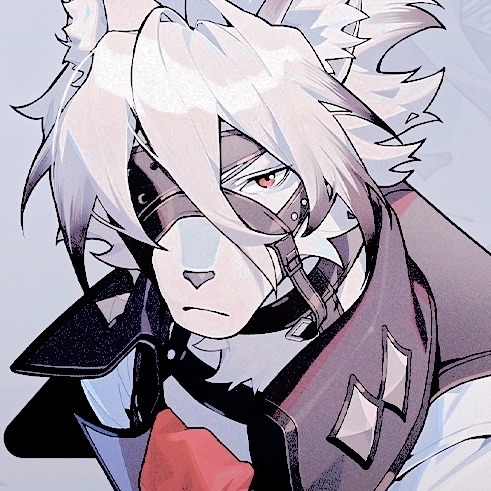

♡ : Von Lycaon icons - no credit necessary but like or rb if saved
63 notes
·
View notes
Text



not mine, this bitch for us


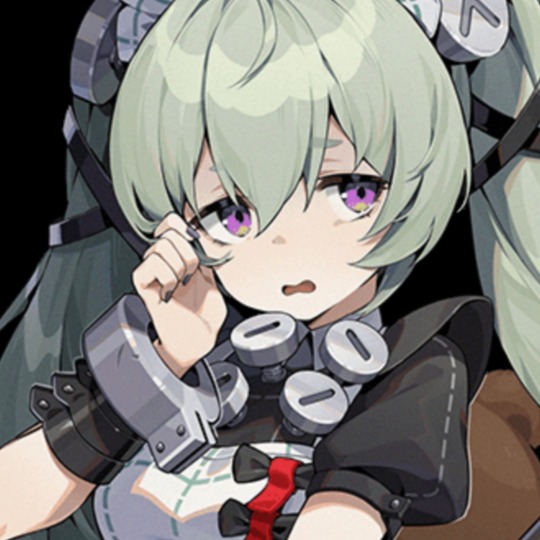
ㅤㅤㅤㅤㅤㅤㅤㅤㅤㅤㅤㅤㅤㅤㅤㅤㅤㅤ ㅤthe gang is what i trust.
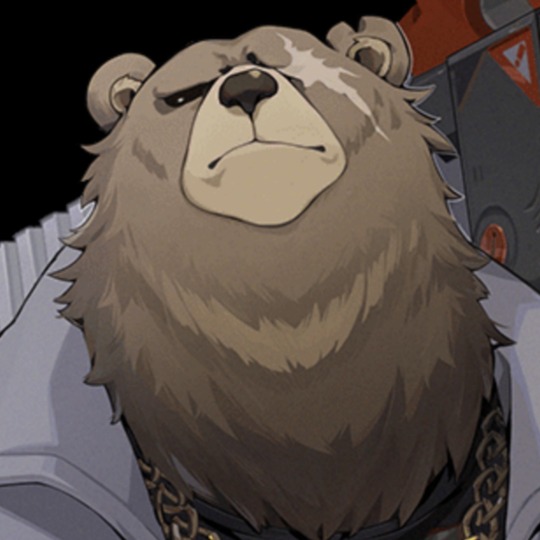

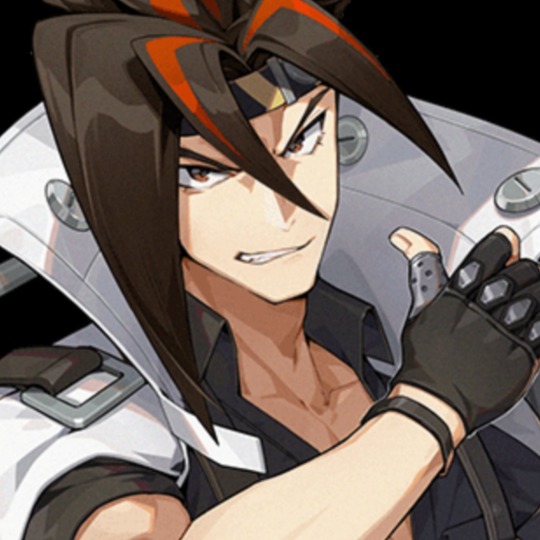
#zenless zone zero#icons#hoshimi miyabi#soukaku#section 6#soldier 11#von lycaon#corin wickes#victoria housekeeping#ben bigger#anton ivanov#koleda belobog#belobog heavy industries#zzzero
47 notes
·
View notes
Text

Ladies, Gentlemen and Non-Bianary Pals, We delay your regular schedule with a special trade with… @br4inr0tx !!
A/N: Thank you sosoosososo much for doing this! I hope you enjoy this as much as I enjoyed your matchup you made for me <3 (also don’t get mad at me I added yet ANOTHER fandom 😈)

For your Zenless Zero Zone Matchup, You have been paired with…
Billy Kid!
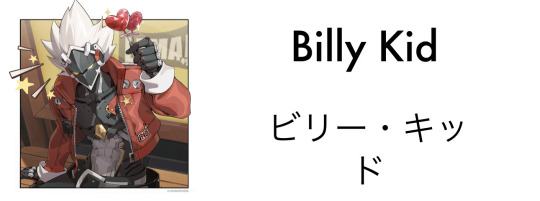
• Since there’s not to much information about him, I’ll be collecting everything I know about him the best I can, But honestly, I see this as a very compatible relationship!
• With his carefree personality he wouldn’t really be very intimidated by you, to your surprise, he’s someone who can get you out of your shell to start talking with him, he’s very interested in you!
• Your humor comes off as “insulting” to others, when you start using that humor with him he’ll pretend to be hurt and pout, but in reality he’s just playing with you.
• He’s probably caught you accidentally staring at him while you were day dreaming, he doesn’t do anything (unless if y’all are in some situation)
• He would definitely buy you so many plushies!
• He’s in love with your style too! Maybe let him wear some of your clothing (nevermind, it’ll probably rip.)
• Even if he’s very silly, he’s also a very serious person (*cough robot*), he will do his best to understand your disabilitys and help you anyway possible.
Round-Ups: Soldier 11, Lycaon
For your Hellsing Matchup, You have been paired with…
Alucard!
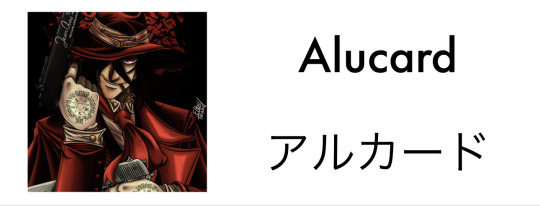
• I think I really like this matchup, also with your TPOF matchup too, this one’s definitely a very good one! Even though your a human, if so, he has deep respect for you!
• You guys get together perfectly, People don’t usually come around him for reasons, to put it together, because their scared of him, and the same goes for you since you look like someone who may not be approachable (not true at all, your super cool! — A/N)
• He may feel a bit surprised by your insulting and sarcastic humor, he will do the same back to you, if he hurts your feelings he’ll apologize and tell you he didn’t really mean it at all, and will get you whatever you want, just don’t be so mean.
• He probably thought you were a vampire at first, and (if) you said you weren’t he was very taken back, so your saying those teeth of yours doesn’t have fangs? huh.
• Your style and his own style match each other very well, he may or may not use some of your accessories or perhaps some of your clothing, he will also give you his (long ass) hat.
• Even if he doesn’t seem to show it, he really loves you so much, and he hopes you do too, don’t you?
Round-Ups: None! This is perfect, too perfect
For your Homestuck Matchup, You have been Paired up with…
Karkat Vantas!
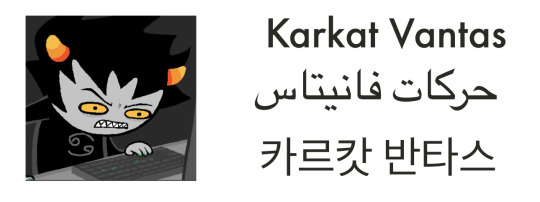
• Another good one! I feel like him having a partner like you would be very good!
• He probably won’t approach you first, you may have too, you guys were probably at a party (idk😭), and you guys bumped into each other, you guys didn’t talk much but later on you guys would become friends and later on, lovers.
• Your style matches his very well! he thinks you look so cool!! he just doesn’t show it……. but that’s okay, he’ll always compliment you.
• He’s very caring for you! He understands your mental disability’s and does his best to take care of you, if someone thinks your trying to be “quirky” he’ll kill them off.
• His personality seems to match with yours, like a missing puzzle piece, I think he wouldn’t probably want a partner who has idiocy in them, someone like you is perfect, he loves your humor, you definitely said something and he’s covering up his laughter.
• Please take care of him too! He has a lot of insecurities, he does his best to look out and care for you, do the same too, he just wants some love :,(
Round-Ups: None!
For your Price Of Flesh Matchup, You have been paired with…
Celia!
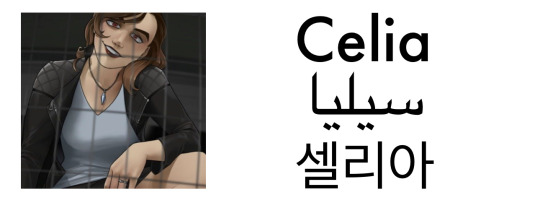
• The best of the best, an iconic relationship.
• I feel like your another victim, but to her, you seemed to have something, she needed to know, so she took you as her “rat”
• The more and more she spent with you, she started developing feelings, hell, her? having feelings? no way, well, she definitely doesn’t like annoying people, she would probably just kill them immediately.
• Your humor is funny, but sometimes she may not be in the mood for it, be careful if you do so she’ll put you back in the cage.
• Since your a caffeine addict, I’d feel like she would buy you coffee and you guys would just talk really, she doesn’t really care for your mental illnesses but later on she will and she’ll help you too.
• She doesn’t really care about your style to be honest, you’ll see her stealing some of your accessories if you wear them.
• She hates her husband of course, but she’s in love with you so much, you guys are definitely gonna kill him and run away together, just the two of you where you find real love.
• Once that happens, your her new significant lover she’s marrying (but your not hearing that from me though—)
Round-Ups: No one! I love this one so much!
For your Boyfriend to Death Matchup, You have been paired up with…
Sano Kojima
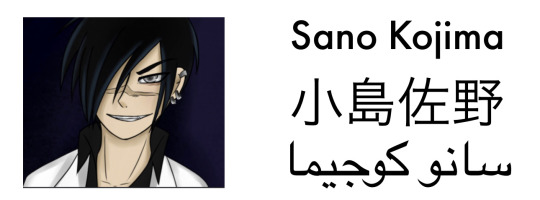
•This one was a little bit difficult for me but I feel like this is a pretty compatible relationship!
• He’s pretty closed off, kind of like you he probably wouldn’t know how to start talking at first, but he does though!
• You we’re supposed to be just one of his experiments that would soon later die, but then you turned out to get into his heart and make him fall for you.
• He LOVES that your into anatomy! you can be his study partner, you guys can experiment on his victims together! Isn’t that romantic? No? What do you mean? Anyways… You would probably help him kidnap some people to work on his experiments, that’s what I think.
• He enjoys your sarcasm very much! it’s what makes you and him more closer with each other, he’s very cold hearted but when you came, you were able to make him warm up too you, and that’s such an amazing thing.
• He would love hearing your shower thoughts, or JUST ANYTHING! He loves giving you plushies just to see you happy, he may be a bit jealous when your not cuddling him, can you cuddle him too?
• He’s just fallen in love with you, he’s making you stay forever, don’t leave now! he wouldn’t wanna kill you after all (:
Round-Ups: Strade.
For your Sally Face Matchup, You have been paired up with…
Larry Johnson!
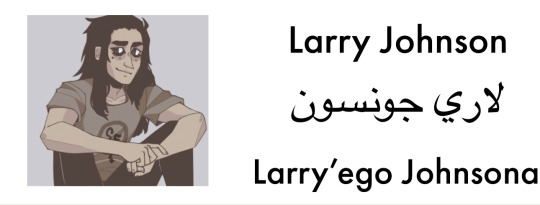
• I did think of sally for some time, but I feel like he would be more good for you, but I’m gonna add sally to the round ups because he also feels perfect, but not as perfect as him!
• He’s definitely a person who wouldn’t be someone annoying to you, he’s very laid-back like you are! He doesn’t wanna intimidated you easily, so he finds a way to get you to be comfortable around him.
• He would love listening to a lot of metal and rock music with you, but wouldn’t mind also listening to more of your other favorite artists outside the metal/rock genre, he can totally teach you how to play the electric guitar, no need to pay him! your his beloved after all!
• He doesn’t find your mental illnesses “quirky” at all, if anyone ever says that or makes fun of you he will definitely stand up for you, don’t worry about them, he’ll take care of them.
• He would buy you plushies for sure! You guys can play video games on your free time too!
For your Jujustu Kaisen Matchup, You have been paired up with…
Sukuna!

• Don’t get mad at me for adding another fandom😭 I immediately thought of this, I couldn’t get it out of my head how perfect you would be for this man, let me tell you.
• His personality AND yours collides perfectly, including with the rest of your dislikes, he took a liking to you when he layed his eyes on you, he couldn’t get his mind off of you, who are you? why are you making him feel like this? he needs to know you.
• He wouldn’t be someone that would intimidate you, he would try to get you to calm down, he likes that your into a lot of gruesome things like horror, true crime, hunting, etc, you guys are just a powerful couple, he would definitely take you on killing sprees, don’t you wanna kill your enemies with him? how good would that feel?
• He doesn’t care that your a “petty bitch” he’s not that good either, he LOVES your humor so much, he loves you using it, he can’t stand kids either like you, you guys can kill them together! even more romantic! why are you holding grudges? he would tell you to just let them go!
• He finds your style pretty cool, he loves the things you wear, he may even tell you to put on a outfit he may like from your wardrobe!
• Honestly, this is the third 10/10 relationship i wrote for you, Im in love with this pairing, you can’t change it otherwise, you guys are made for each other, remember, he’s never gonna let you go now!
Round-Ups: Toji (Zen’in) Fushiguro, Choso.
#joey posts!#matchup#matchups#zenless zone zero#zenless zone zero matchups#Zenless zone zero matchup#hellsing#alucard hellsing#alucard#hellsing matchup#hellsing matchups#homestuck#homestuck matchup#homestuck matchups#karkat vantas#sally face#sally face matchup#sally face matchups#jujustu kaisen matchups#jujustu kaisen matchup#Jujustu kaisen#sukuna jjk
13 notes
·
View notes
Text
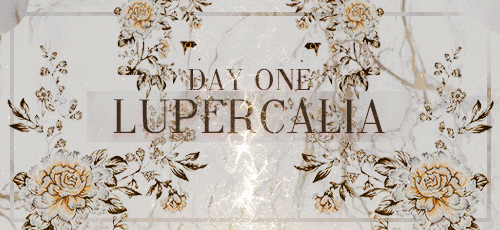
"LETS GET READY TO RUMBBLLLLEEEEE"
- Lycaon
Held over three days, Lupercal’s doors were open as Lupercalia began. A path was laid through the fey forest so anyone who wished to attend could find their way through the enchanted woods. The council and its emissaries were putting everything they had into making Wolfchella something that would show off the independence and strength of Lupercal. A spell of oblivion had been placed over the town, any humans that looked at the walls wouldn’t remember anything supernatural that occurred within. They’d remember iconic bands like SlipKnot, My Chemical Romance, Twenty-One Knots, The Howling Pumpkins, Wolfgarden, RadioKnot, Lycan in Chains, Jane’s Dog, The PupSpring, Yeastie Boys, Knot Mouth, Counting Crows, Rage Against the Suppressants, 3 Knots Down, Stevie Knots, Knot Doubt, Nine Inch Claws, Pearl Jam, Red Knotsuit Apparatus, AB/O, Linkin Knot, and Weezer. Two new bands also premiered, “Dawg in You” with Anders, Connor, and Dante and “Huntress” featuring Harlow, Paloma, and Milena.
The food stalls served such delicacies as hamburgers, hotdogs, and cheese fries. Anybody looking for more decadent cuisine could swing by the Waffle House where they served waffles at a marked up price. Everyone’s favourite lycan dive-bar, All Fours, offered free beer nuts to anyone who bought the drinks they were best known for, warm beer. Old Frascati was handing out wine curated to lycans, six times as strong as regular wine with notes of milkbones.
Humans would remember the skirmishes, the gauntlets, the fun, the games, and the prizes; they would not remember anything mystical. Anyone seeing the supernatural for the first time would consider it completely normal, and then promptly forget about anything strange. Upon entering people would register for events: Capture the Flag, the Contest of Strength, the All-Fighter Gauntlet, the Lycan Gauntlet, the Coliseum (Singles), the Coliseum (Doubles), and the much anticipated Alpha Gauntlet. By the afternoon, the rosters had been posted and the competitions were set in stone.
Day One of Lupercalia saw the opening contest, Capture the Flag, a friendly skirmish between two teams, followed swiftly by the contest of strength. To close off the evening, the Opening Rumble of the Alpha Gauntlet would take place, securing the roster for the first rounds of fighters.
Day Two of Lupercalia would immediately kick off with the Open-Lycan Gauntlet, followed immediately by the first round of the Alpha Gauntlet. The singles tournament would be held in the early evening, and to close out the night, the All-Fighter Gauntlet would be held.
Day Three of Lupercalia would open with the second round of the Alpha Gauntlet, where the finalists would be decided. The afternoon would have the Doubles Tournament and after sunset, the semifinals of the Alpha Gauntlet would be held. Immediately following the final round would commence.
See below for the list of prizes, ooc info, and who won Capture the Flag, the Strength Contest, and who will be entered into the first round of the Alpha Tournament.
ooc info:
Capture the Flag: Buy one Get one Gelato, coupon is only valid until February 18th.
Strength Competition: Gold-Plated Dumbells
Open-Lycan Gauntlet: Free Drinks for One Year at All Fours
Singles Tournament: All-inclusive spa package for one at the local bathhouse, complete with a happy ending.
Doubles Tournament: Trip for two to see Cirque Du Soleil
Alpha Gauntlet: Alpha Status
Post on the 19th saying who won the things from Day 2.
Post on the 23rd saying who won the things from Day 3.
Post on the evening 24th saying who are the finalists in the Alpha Gauntlet.
Post on the morning of the 25th saying who will be the next Alpha of Lupercal.
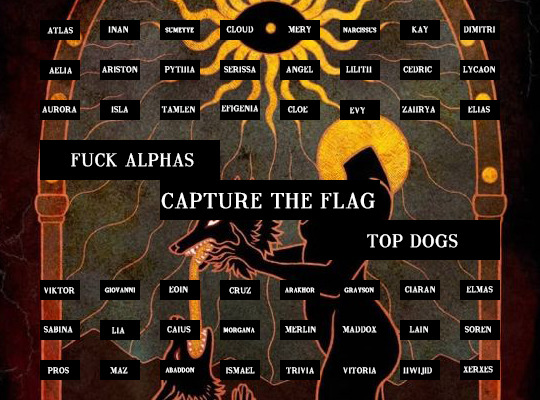
“Fuck Alphas” won 🙂
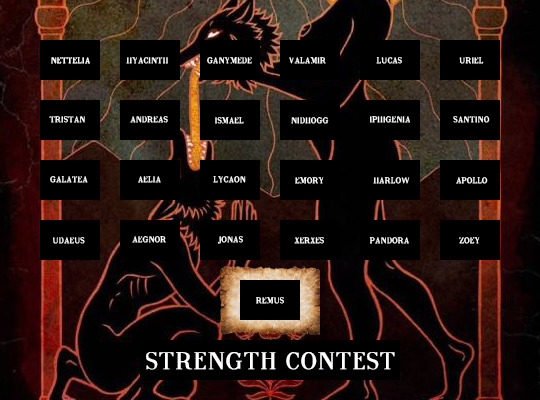
While it seemed obvious that the demigod with the “Super Strength” ability would win, Remus confidently walked up, copied the demigod’s power on top of his own, and then won the gold-plated dumbbells. It seemed obvious that Remus intended to win every single competition just to flex on Lupercalia.
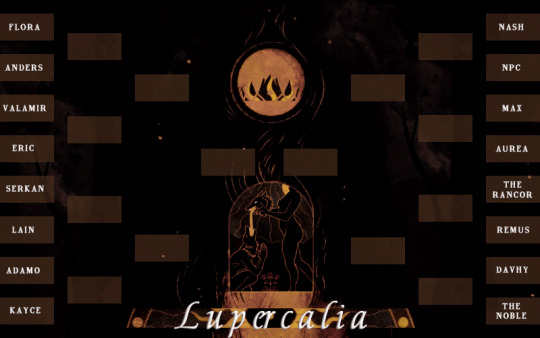
Released into the fairgrounds in an all-out brawl, over fifty lycans battled it out, those left standing after an hour would make up the first round of the Alpha Gauntlet. While most assumed Lain would be beaten into a pulp, he fought like he was possessed, foaming at the mouth, rabid, and holding an insane amount of strength, when the final bell went off and he shifted back he immediately collapsed. The Doctor would later discover that while he was under the influence of an unknown substance, there were no rules against performance enhancers.
5 notes
·
View notes
Text
FFF174 Monster Mash

This was written for @flashfictionfridayofficial
WC: 828
Fred was making his way through the graveyard, one wet and sticky tentacle at a time. He didn’t really want to go, these things were nothing but fearmongering - and he knew how to scare and frighten humankind. He was Fred the Kraken for Lucifer’s sake! You’d think that would earn him some leeway, but no... every eejit and their ancestors had to attend these Monthly Monster Meetings. So here he was on his way to the Mausoleum.
Fred crawled his way over to the marble dwelling. It belonged to the Burton family and had been the venue since these meetings began - despite Fred’s multiple requests to move the venue closer to the shore. But Matilda Burton - or what remained of her - had vehemently denied them, citing she had made a promise to an old friend (what had been his name again? Howard Peter? Or something along those lines) to never leave Worcester. So Fred had to stealthily traverse the entirety of Rhode Island and half of Massachusetts just to attend this torturous meeting.
He made his way through the depths of the crypt and found his seat and the yew table, and greeted his fellow monsters. Carl the Giant Cockroach had somehow made her before him. Usually, this lazy ladybug was last to arrive. He was seated next to Elizabeth Coraline Frankenstein IV, the current head of the Frankenstein dynasty. As usual Howard Hyde, her right hand was standing at her shoulders, alert as ever. The fourth seat at the table was filled by Alphonse, who spear-headed the Vampiric Coven of New England and was thusly required to attend the meetings. Matilda Burton's half-decomposed head floated at the end of the table, jaw slightly ajar. Her skeletal appendages sprawled across the table. Behind Matilda, Fred could see descendants of Lycaon, members of Unseelie Courts, blights, sirens, and all manner of otherworldly creatures. He was so caught by the sheer number of creatures that had been amassed that it took a moment before Fred realized Matilda had begun to speak.
“…situation is quite grave, fellow cryptids. I have reports from multiple day dwellers that humankind has ceased being scared of us, we must form a plan to combat this development”- Matilda could say no further as a cacophony of shrieks, curses, howls, and other horrible noises were heard throughout the crypt.
“Poppycock!”, shouted one.
“Blasphemy!”, added another.
It took some doing and a loose threat to be bathed in Holy Water, but Matilda managed to subdue the crowd of outraged and flabbergasted nightmares. “Unfortunately, it’s true. According to my intelligence operatives, humans have been found not only to tolerate the macabre but also to enjoy it. Iconic works like Nosferatu, Beetlejuice, and Chucky are now described as “comfort movies”. Even worse…” Matilda paused and her floating head bobbed slightly up and down as if she had gagged. “Even worse… some of the humans have taken a weird, disturbing liking to us. They seem to want to seduce us.” She turned to face both Alphonse and Fred. “Vampires and Octopuses seem to be especially popular.”
Silence filled the crypt, as the vampire and the kraken looked at one another, faces contorted in disgust. “They know monsters reproduce asexually, right?” asked Fred. “Like spores and mushrooms?”
“Especially vampires! It’s considered general knowledge that reproduce through offering blood”, shouted Alphonse, “Why don’t they know that?”
All eyes and every eye socket had turned to the pair. Even Burton herself had caught herself staring. “Ahem… well. As I said this is clearly a concerning development and we must make haste, otherwise this will be the death of frights, jump-scares, and nightmares everywhere. Does anybody have any ideas?”
Like fog on a frigid autumn morning, silence filled the crypt once more.
“Aeons of haunting humanity and none of you fools have any suggestions?”
Then a shill shriek sounded from somewhere. “I might have a solution”, said a banshee. “Why don’t we try the mundane stuff? The other week, I discovered by chance that my current victim is especially frighted by exams, especially French. So I tried to replicate it. And he never closed an eye that night! I upped the ante with unpaid bills and the state of the economy for the rest of that week. I’m proud to say he’s an insomniac now!”
Matilda looked at the banshee who was cowering slightly. “You mean that? He doesn’t sleep anymore? Be truthful!” The banshee merely nodded. Mathilda snapped her boney fingers, and a will-o-wisp appeared. “Kevin, I have a task for you. Go to Hell’s Corporate Division, and ask them to send me everything they have on the torturous nature of the mundane.” Kevin flickered, acknowledging his master, before sinking through the ground.
Matilda raised her head and spoke: “Hear ye rotten ones. The Mundane shall be the new Macabre! Go forth and spread terror alike!”
[Taglist: @lazy-bumblebee Send me an ask or comment to be + /-]
#fff174#flashfictionfriday#writeblr#short fiction#I tried my hand at some humorous horror with this prompt#scae.writes
13 notes
·
View notes
Text
Are African Wild Dogs Endangered and How Many Are Left In the World?
New Post has been published on https://petn.ws/eVgsV
Are African Wild Dogs Endangered and How Many Are Left In the World?
The African wild dog (Lycaon painted) is an iconic canid species endemic to continental Africa. Unfortunately, it is also one of the world’s most endangered canids, with an increasingly fragmented and declining population. Read on to find out how many African wild dogs we think are left in the world, along with current conservation status […]
See full article at https://petn.ws/eVgsV
#DogNews
0 notes
Text
The Need for Speed: Exploring the World's Fastest Cats
Cats are known for their agility, stealth, and predatory instincts, but some members of the feline family take these attributes to the next level—the need for speed. These magnificent creatures have evolved to become nature's ultimate sprinters, capable of astonishing bursts of velocity. In this article, we will explore the world's fastest cats, delving into their remarkable adaptations and how they use their speed to survive and thrive in the wild.
Cheetah (Acinonyx jubatus)
When it comes to speed, the cheetah reigns supreme. This iconic African cat holds the title of the world's fastest land animal. Cheetahs can reach incredible speeds of up to 75 miles per hour (120 kilometers per hour) in short bursts covering distances of 1,500 feet (460 meters) or less. Their acceleration is equally impressive, going from 0 to 60 mph in just a few seconds.
Cheetahs' speed is a result of their remarkable adaptations, including lightweight bodies, long limbs, and non-retractable claws that act like cleats on a sprinter's shoes, providing traction during high-speed chases. Their keen eyesight helps them spot prey from great distances, and they rely on strategy and stealth to get as close as possible before launching their lightning-fast pursuit.
African Wild Dog (Lycaon pictus)
While not a true cat, the African wild dog, also known as the African painted dog or Cape hunting dog, deserves a spot on our list. These canines are incredible hunters, capable of reaching speeds of up to 45 miles per hour (72 kilometers per hour). They use their speed, teamwork, and stamina to chase down prey over long distances, often outlasting their quarry until it succumbs to exhaustion.
African wild dogs have evolved to have slender bodies, long legs, and excellent endurance, allowing them to maintain their high speeds during extended pursuits. Their striking coat patterns are unique to each individual, making them easily distinguishable from one another within their tight-knit packs.
North American Cheetah (Cougar, Puma concolor)
The North American cheetah, also known as the cougar or mountain lion, is a stealthy predator that combines agility with surprising speed. Despite its size and weight, cougars can reach speeds of up to 50 miles per hour (80 kilometers per hour) in short sprints. These cats are excellent climbers and swimmers, allowing them to navigate their varied habitats with ease.
Cougars' speed is complemented by their powerful hind legs and a flexible spine, which enables them to leap great distances in a single bound while pursuing prey. They are solitary creatures, stealthily stalking their prey and using their speed to launch a surprise attack.
Caracal (Caracal caracal)
The caracal is a medium-sized wild cat found in Africa, the Middle East, and parts of Asia. While not as famous as the cheetah, it possesses impressive speed and agility. Caracals can sprint at speeds of up to 50 miles per hour (80 kilometers per hour) when chasing prey.
These cats are known for their distinctive ear tufts and muscular build. Their speed is facilitated by their long legs and keen hunting instincts, which help them pursue and catch fast-moving prey like birds and small mammals.
Eurasian Lynx (Lynx lynx)
The Eurasian lynx is the largest of the lynx species and is known for its agility and speed. While it may not reach the speeds of some other big cats, the Eurasian lynx can run at speeds of up to 50 miles per hour (80 kilometers per hour) when in pursuit of prey.
Their powerful legs and large paws make them adept at navigating rugged terrain, and they are known to chase down deer and other ungulates in their native habitats of Europe and Asia. Their distinctive tufted ears and impressive camouflage help them blend into their surroundings while stalking their prey.
Conclusion
Nature's fastest cats have evolved an array of adaptations to meet the demands of their high-speed lifestyles. From the cheetah's lightning-fast sprints to the African wild dog's endurance-based chases, these feline and canine predators remind us of the incredible diversity and adaptability of life on Earth. While they may have different techniques and habitats, one thing is certain—when it comes to speed, these cats are second to none in the animal kingdom.
Top 10 countries with red, yellow, and blue flags
Top Ten Countries With Green, White & Red Flag
Top 10 Cutest Birds In The World
Countries with Red Blue Green White Black and Yellow (Gold) Flags
Top 10 Animals With Spot
Top Ten Countries With Red & White Flag
0 notes
Text
Wild dogs in africa

The circumstances in the country necessitate, and demonstrate the benefit of, intensive, adaptive management for the national population of wild dogs. It is clear that despite differences in survey effort among the three subpopulations, South Africa has a small (∼500) but stable population of wild dogs, with the metapopulation contribution becoming increasingly important. However, the contribution of the metapopulation has increased significantly over time. Kruger has consistently supported the highest proportion of the national population over the last two decades. The overall national population has remained stable even though the number of packs has increased. The free-roaming subpopulation has remained small but stable, even though the number of packs has declined due to anthropogenic threats. The metapopulation is the only subpopulation that has increased significantly over time (both in population size and number of packs), likely due to intensive conservation efforts and the reintroduction of wild dogs into 15 additional reserves since 1998. We found that Kruger supports a substantial population, which has declined over time. We assessed the long-term (four wild dog generations, ∼20 years) trends in population size and growth rate within each of these three subpopulations. The national population in 2017 was 372 adults and yearlings and comprised three subpopulations: 1) Kruger National Park (Kruger), 2) an intensively managed metapopulation established through reintroductions into isolated, fenced reserves, and 3) a free-roaming population that occurs naturally outside protected areas. These questions can help provide a framework for exploring topics presented in this story.South Africa is one of only seven countries with a viable population of African wild dogs ( Lycaon pictus). Find her on Twitter and Instagram : questions for educators Romi Castagnino is Mongabay’s bilingual writer. The aim is that the boundary will deter wild dogs from leaving the safety of protected wildlife areas.īanner image: a snapshot of Megan Claase’s 2015 videoĭon’t forget to subscribe to our Youtube channel and hit the bell icon to make sure you never miss a camera trap video again!īanner photo by Charles J. Understanding African wild dogs’ scent marking is a key step in Botswana Predator Conservation’s development of a ‘BioBoundary’ that relies on an artificial scent. Apps team is using camera traps to record the dogs’ responses to experimentally manipulated scents. Apps is involved in two camera trapping research projects that generate unique and ground-breaking videos of African large carnivores one on leopard predation and the other one on African wild dog shared marking sites. Special thanks to Peter Apps from Botswana Predator Conservation for sharing this footage with us. Watch the video to learn more about them! To protect this species we need to create protected wildlife corridors to help connect their fragmented habitats and also reduce its conflict with humans. Habitat loss, human-wildlife conflict, being caught in snares as bycatch by poachers hunting for meat, and infectious diseases like canine distemper and rabies, are among the factors that affect their population. Unfortunately, African wild dogs are listed as Endangered with fewer 6,000 individuals left in the wild. However, if it’s a smaller animal they will pull and tear it apart. Rather than the suffocation strategy used by big cats when they catch large prey, African wild dogs will bite their prey until it stops running. They live and hunt in groups that are usually dominated by a monogamous breeding pair. These dogs have a higher success rate killing prey than lions and leopards. African wild dogs are highly social animals forming packs that can have more than 60 members. Their biggest populations are in the open plains and sparse woodland of Botswana, Zimbabwe, Namibia, Zambia, Tanzania, and Mozambique. This week we’re meeting the African wild dog.Īfrican wild dogs are neither wolves nor dogs, even though they belong to the Canidae family. Every Tuesday, Mongabay brings you a new episode of Candid Animal Cam, our show featuring animals caught on camera traps around the world and hosted by Romi Castagnino, our writer and conservation scientist.Ĭamera traps bring you closer to the secretive natural world and are an important conservation tool to study wildlife.

0 notes
Text






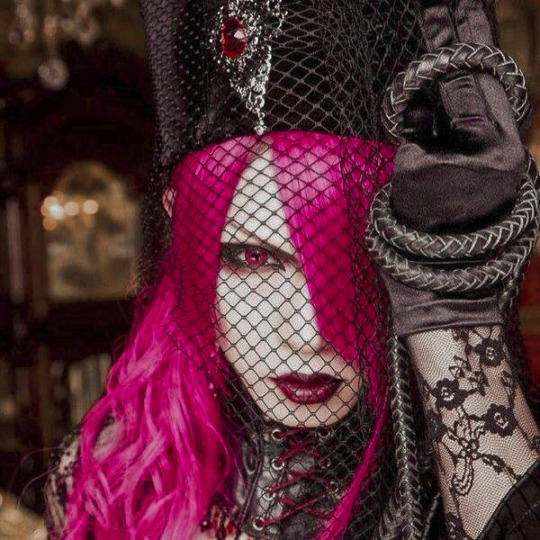


7 notes
·
View notes
Photo

pixel icon commissions for $10
#pixel art#commission#icon commissions#OC#animals and nature#lycaon pictus#mabeco#painted wolf#deda mabeco
3 notes
·
View notes
Photo

#NewProfilePic
Thats how kiddos tag new icons nowadays, right?
I did this inspired by Lycanroc's midnight form design, It looks amazing! I'm surprised at the different amount of doodles with different styles I could pull out this week, this one's my fave so far, I may use it more!
237 notes
·
View notes
Text
The #MonstrousMayChallenge 2021

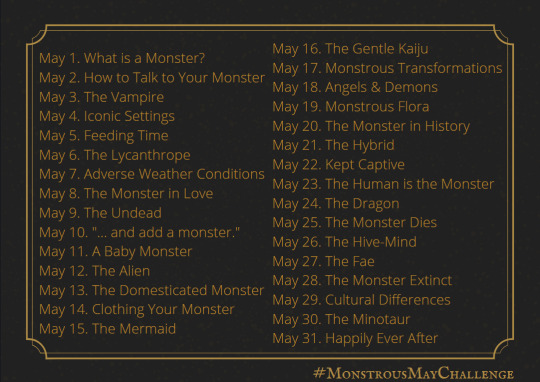
Love monsters?
The #MonstrousMayChallenge is going to be a series of monster-centric prompts for every day of the month of May!
Draw, write, talk about, analyse, shitpost, critique, rec, discuss, create, consume, and otherwise have fun with each prompt.
Tell your friends, pick and choose the prompts that you like best: make art, make fiction, make rec lists, make jokes, make monsters!
May 1. What is a Monster?
May 2. How to Talk to Your Monster
May 3. The Vampire
May 4. Iconic Settings
May 5. Feeding Time
May 6. The Lycanthrope
May 7. Adverse Weather Conditions
May 8. The Monster in Love
May 9. The Undead
May 10. "... and add a monster."
May 11. A Baby Monster
May 12. The Alien
May 13. The Domesticated Monster
May 14. Clothing Your Monster
May 15. The Mermaid
May 16. The Gentle Kaiju
May 17. Monstrous Transformations
May 18. Angels & Demons
May 19. Monstrous Flora
May 20. The Monster in History
May 21. The Hybrid
May 22. Kept Captive
May 23. The Human is the Monster
May 24. The Dragon
May 25. The Monster Dies
May 26. The Hive-Mind
May 27. The Fae
May 28. The Monster Extinct
May 29. Cultural Differences
May 30. The Minotaur
May 31. Happily Ever After
The full write-up for the #MonstrousMayChallenge is below the cut — for every day of the month of May 2021, there’ll be a new prompt all to do with creating monsters and monster-centric stories!
You can either go directly off of the prompts themselves, or if you want a little more inspiration, you can come check this post for more in-depth exploration of the idea in question.
For each entry in response to the prompts, regardless of what platform you post to, make sure to tag the #MonstrousMayChallenge! In the meantime, just spread the word and tell your friends to get them ready for May!
Feel free to pick and mix the prompts you like best, to skip any prompts that don’t suit you, or to swap in prompts of your own if you like — every 3rd day is a specific category of “classic” monsters, and they’re not for everybody!
“Monsters are the patron saints of imperfection.” — Guillermo del Toro (x)
The emphasis on all of the prompts below are on monster-centric and monster-POV stories. Monstrous romances and monstrous erotica are both welcome and encouraged, just as much as platonic monstrosity is, and please feel free to join in regardless of your medium, whether you draw, write, animate, or create in another way entirely!
Just a note as to what expect — this challenge is intended for those who love monsters, who identify with monsters, who feel for the monsters, and all the prompts are written with that expectation in mind.
One small note: throughout these prompts there are references to folklore and ideas from different cultures and backgrounds. When exploring ideas from cultures that aren’t your own, remember that not every representation of spirits or monsters can be divorced from its original context, and take care to do your research to ensure you aren’t harming others by furthering harmful stereotypes or appropriating ideas of cultural importance.
We’re all here to have fun, which means that using a love of monsters as a vehicle for racism (whether that’s outright or by upholding colonial and imperial ideas, appropriating from other cultures, or fetishising other races and cultures) is not what we want to see in the course of this challenge, and isn’t welcome here.
Note the above especially in regards to the Alonquian W*nd*go.
Saturday 1st May 2021 — What is a monster?
Here’s a warm-up challenge to start the month off:
For you, what is a monster? What makes a monster monstrous? What delights you, excites you, scares you, horrifies you about a monster? What fills you with affection for monster?
When you first hear the word monster, what springs first to mind?
This is a free space — talk about, write about, draw, animate, sing about, the monster(s) you love best, and why you love them!
Sunday 2nd May 2021 — How To Talk To Your Monster
How does your monster communicate?
Do they have a mouth, lips, a tongue, like humans do? Do they communicate verbally at all? Do they communicate via telepathy, via their tentacles, or their limbs? Do they speak, but at a pitch or volume or speed inaudible or incomprehensible to human ears? How is this gap bridged?
Does your monster understand humans but struggle to make itself understood? Does your monster want to be understood?
Alternate: How does your monster communicate with other, different monsters?
Monday 3rd May 2021 — The Vampire
The vampire is a walking corpse that sustains itself by feeding off the the blood of the living.
There are a thousand variations on the myth — a corpse that rises from its grave at night only to mindlessly glut itself on the prey it can find becomes a reclusive gentleman who lives in isolation in a brooding, gothic castle overlooking a Transylvanian woodland (Dracula); a sparkly immortal Mormon who likes to climb into young women’s windows to watch them while they sleep (Twilight); a rich aristocrat so intent on preserving his properties and his privilege that he clings onto immortality at all costs (Interview with the Vampire); an extremely sexy vampire in sunglasses who’s devoted to killing other vampires (Blade), and so on and so forth.
Explore your own take on the vampire:
Is your vampire actually dead? Do they just appear dead, or sleep in coffins?
What makes a vampire? A curse? A ritual? Transmission of vampiric disease — via the exchange of blood or via sex? Are they born that way? Do dhampirs (half-vampires) exist? Do vampires become vampires by choice? Is there a contract or an agreement?
Does your vampire drink blood? Cerebral fluid? Consume human flesh? Do they sap energy from others in non-literal ways — for example, do they feed off of emotions or energy, or seek to devour a soul?
If they survive off of the above, do they also eat or drink other things? Are they capable of doing so without becoming ill?
Is your vampire sensitive to sunlight? Bright light in general? Do they physically react to it? Do they burn, or crumble to dust? How do they cope with this — do they only come out at night, do they wear leathers and carry a parasol, do they use a medicated suncream?
Can vampires become ill? Sick? What weakens a vampire? What kills them?
Does your vampire have any other powers? Can they fly, hypnotise people, transform into gas or another animal?
What happens if a non-human becomes a vampire?
Alternate: A non-vampire monster becomes absolutely obsessed with vampires. They love them to pieces! Why? How do they get their vampire fix?
Some inspiration, if you want it:
Article: An 18th-century guide to hunting vampires from National Geographic
Article: The Great New England Vampire Panic from the Smithsonian Magazine
Video Essay: The Sexy Vampire Trope, Explained, from The Take
Tuesday 4th May 2021 — Iconic Settings
Imagine an iconic setting within the horror genre or without — your Transylvanian castles, your unending deserts of shifting sands, your haunted houses and their infinitely winding corridors, your unholy spires atop distant peaks, your deep and dismal caves, your roiling seas…
What monsters lurk within these settings? How do they feel about their environs? What happens if you transplant a monster from one such setting into its opposite, or combine a few of them together?
What happens if these settings are invaded, lost, destroyed, expanded, changed?
Alternate: Imagine any iconic setting you like, but instead of the monster lurking within, the setting is the monster.
The seas themselves are sentient; the caves are toothy maws of impossible beasts; the mountains themselves have eyes; the castles and houses and ancient tombs and temples are, themselves, imbued with a spirit… Is it hungry? Angry? Lonely?
Wednesday 5th May 2021 — Feeding Time
What does your monster eat?
Is it predator or prey? To a human understanding, does it look like what it is? If it eats meat, does it prefer to eat it dead or alive? If it’s not from this planet or dimension, does it struggle to find new things to eat? What does it look like when your monster eats? Is it private about eating? Does it look scary when it feeds?
Does it eat at all? Does your monster get its energy from the sun, from electricity, from magic, from something else entirely?
Alternate: From a monstrous POV, a human’s dietary habits seem monstrous and strange. Why?
Thursday 6th May 2021 — The Lycanthrope
The werewolf is a person who turns into a wolf, typically at the time of the full moon. Lycanthropy is the name of the condition of being a werewolf, or someone who turns into some other animal.
The variations on the werewolf are infinite — the core is often people bitten by strange beasts and left forever cursed with their regular transformation (for example, in The Wolf Man); but a curse is also possible, such as when kings are turned into wolves as punishment for their hubris (as with King Lycaon in Metamorphoses); or of course, a curse inherited, such as when young men who come into their inherited lycanthropy and suddenly have a whole host of new puberty concerns (Teen Wolf).
And it needn’t be a wolf at all — there are all manner of shapeshifters between one myth and the next, and as much as there are werewolves there might be werelions, werebears, werebats, et cetera, et cetera.
For your lycanthrope, why not explore:
What animal or creature does your lycanthrope turn into? A wolf, a bear, a lion, a snake, a bird? Something magical — a phoenix, a unicorn, a griffin, a dragon?
Once transformed, can your lycanthrope be distinguished from the normal edition of the beast? What are the differences, for example, between a werewolf and a wolf?
Can your lycanthrope transform at will? Is it influenced by their emotion? Is it kept to a regular schedule? Can that schedule be interrupted? For example, if it’s a monthly cycle like someone’s menstruation, can they go for periods without transforming or with “spotty” transformations? If it’s with the phases of the moon, does hiding from the moon help? What happens if you send them to another planet?
Is the transformation painful? Physically or mentally taxing?Are there any health problems associated with lycanthropy?
When transformed, how conscious and aware of themselves is you lycanthrope? Do they know they’re transformed? Do they remember what they were?
Alternate: Sometimes, another monster turns into a human.
Friday 7th May 2021 — Adverse Weather Conditions
What weather is your monster happiest in? What weather is your monster least happy in?
Is your monster native to an area that’s extremely hot and humid? Very cold and dry? Is your monster used to heavy rains, droughts and little water, sandstorms, electrical storms, blizzards? If your monster lives in space or underwater, how are they affected by solar flares or tropical storms, shifts in tides and gravitational flows?
How has your monster evolved or developed to handle these weather conditions — or, is there anything your monster hasn’t evolved for, and struggles with?
Alternate: Your monster is a house-monster, and will not be going outside. They would like a blanket and a cup of hot cocoa and a nice comfortable bed, please and thank you.
Saturday 8th May 2021 — The Monster In Love
Your monster’s in love — what do they do about it?
Does your monster have any particular mating rituals or ways in which they show their affection? Does your monster mate for life, does your monster date, does your monster romance singular or multiple partners? Does your monster yearn, do they pine? Do they bring gifts, do they do special dances, do say particular words or have mating calls?
Is their love reciprocated — is it even understood?
When one monster loves another monster, what does it look like? What does it look like when a monster is in love with a human? When a human falls in love with a monster?
Alternate: Your monster has never been in love, and is baffled — perhaps even disgusted — by the prospect. Do they do research? Demand an explanation?
Sunday 9th May 2021 — The Undead
The undead covers a lot of things under a similar umbrella, and it’s up to you whether they count as monsters or not — ghosts, ghouls, poltergeists, spirits, revenants, draugr, reanimated corpses like zombies, arguably vampires… To infinity, and beyond.
We can be talking spirits without bodies or with new bodies, corpses with new spirits in them, corpses controlled by necromancers or the like, and so on.
So, for this prompt:
For your undead monster, are they conscious, sentient? Do they control their own body? Do they remember when they were alive, if they were dead and then reanimated?
If they have a physical form, can someone tell they’re undead? Are they rotting, corpse-like, desiccated, all bones, all flesh, all muscle? Are they missing parts? Do they have any extra ones? Do they look the same way they used to? If they don’t have a physical form, can you see them at all? Can you see them only sometimes?
What sustains this undead monster? Do they feed off of anything, or are they just sustained by the air itself, by magic, by some sort of magical object or curse?
Was your undead monster once a human? Once a werewolf? Once a faerie, once a dragon, once some other creature entirely?
Alternate: Your monster is a necromancer, and they are not undead, but control and raise, in some way or another, the undead.
Monday 10th May 2021 — “… and add a monster.”
Take absolutely any iconic work you like, whether it’s a classic piece of literature, a poem, a piece of mythology or folklore, a fairy tale, a fable, a shanty or a campfire song — anything that’s in the public domain and might be well-recognised — and add a monster.
Have Sherlock Holmes meeting a vampire, reimagine Jean Valjean as a minotaur, give Mr Darcy a deep and affectionate longing for his local werewolf.
You don’t have to keep to the same characters or plots — rewrite an existing plot with monsters (Rapunzel or Cinderella, for example), have two plots crossover (what happens when the monsters in two myths team up to defeat the hero out to kill them?), add monsters or change the monsters in the narrative, or if it already has a monster, add another.
Alternate: Take a public domain domain monster and give them a break. Send Dracula on holiday, give the poor result of Frankenstein’s experiments a spa day, etc.
Tuesday 11th May 2021 — A Baby Monster
How do the monsters breed?
Do they lay eggs? Give birth to live young? Do something else entirely? Are monsters active parents? What happens when monsters interbreed, or breed with humans?
Is the breeding… fun? 😉
I know not everyone likes writing babies or kids, and equally that some people have come into this challenge specifically for the monsterfucking, so there’ll be two streams of main prompts — one focusing on the breeding for you child-free monsterfuckers, and another focusing more on monstrous baby development once an egg is laid or a baby is born, etc.
Feel free to do both if you want to do both, as one does lead into the other!
Questions about breeding and monstrous pregnancy:
Does your monster fertilise eggs for the purposes of a live pregnancy, do they lay eggs, do they clone themselves, do they breed in some other way?
If your monster has genitalia, what do they look like? Are they analogous to human genitalia? Are they particularly big or particularly small compared to the analogous human parts, if so? How compatible is your monster’s genitalia with a human’s genitalia — or another monster’s?
If there is a size difference between monster and partner, what comes of this? Are there any chemical differences between monster and partner — for example, does the monster’s touch impart a high or some kind of contact aphrodisiac?
Are any attempts at breeding viable? If the monster’s partner is filled with eggs, what happens the longer they carry them? If the partner does carry the eggs or the babies to the point of birth and laying, what happens? Is it a painful process? Will they survive it? Does the partner know they’re pregnant at all?
And the pregnancy/egg-carrying questions: how does the partner’s biology change to accommodate the pregnancy? Do they have any strange or unexpected cravings? Does their biology change in any unexpected questions?
Questions about monstrous child development:
How is the monstrous baby first conceived? Is it an egg laid, is it an egg fertilised, an egg fertilised and then carried, as the result of a live pregnancy, something else entirely? If they’re laid eggs, do they go through a larval stage or other similar development?
Are monstrous babies born alone, or in groups? Do they have a high viability rate? Do the monstrous babies eat one another? Do they eat their egg casing or their placenta, if applicable? If not, what do they eat — do they drink milk or blood, do they need their food pre-chewed by their parents, can they look for food themselves?
Are monstrous parents very active in caring for their offspring? Are monstrous babies born able to take care of themselves, able to have a sort of independence, or do they need to be cared for for a period first?
How fast or slow is a monster’s development? How long does it take for them to become fully grown? How much do they grow, and how does their body develop and change as they run through their lifecycle? Do they shed their skin or any body parts, do they change a lot materially?
Alternate: What does monstrous contraception look like? Do they have a concept of it? If they don’t, how do they feel about it being explained to them?
Wednesday 12th May 2021 — The Alien
What makes an alien?
Are they from another planet, another dimension? How similar are they to anything found on Earth? How did they get here?
Are they intelligent, sentient? Do they know they’re on a foreign planet or in a foreign dimension? How fit are they to survive on Earth? How do they respond to the animals, the new sounds, the new world, around them? What technology do they have? Do they appear to be aliens as people imagine them? Do they pilot aircraft as people think they do?
Alternate: A human (or another species from Earth) is the alien on another planet or another dimension populated with “monsters”.
Thursday 13th May 2021 — The Domesticated Monster
Let’s look at the monster domesticated.
The likes of Pokémon, fantastical creatures as beasts of burden or as steeds — unicorns and pegasi and giant spiders and dragons, for example — or other tamed monsters that have learned to live with humans, and live side-by-side with them.
Are monsters actively bred for a result, or do they domesticate themselves as cats and dogs did? Do they perform tasks or assist humans? Do they give milk or eggs or honey or silk or meat? At what point in their domestication are they? Are they happy? Are they well-treated?
Alternate: A monster gets a pet of their own — is it a fantastical species, or is it a dog, cat, bird, etc? Is it even a human?
Friday 14th May 2021 — Clothing Your Monster
Does your monster wear clothes or armour?
What sort of clothes or armour do they wear? Is it grown, made, bought, traded for? Do they wear any other kind of jewelry or decoration? Do they always wear it, or only for some occasion? What do they think of human clothes? Do they want to try wearing any themselves, or taking human fabrics for monstrous clothes?
Alternate: If your monster does not wear clothes, what do they think of human clothes? How do they feel about the fact that humans wear them? Do they have a full understanding of the separation between clothes and flesh?
Saturday 15th May 2021 — The Mermaid
A mermaid is a half-human, half-fish.
You can take this very literally, as in The Little Mermaid, with someone who has a human upper half and fishy bottom half (or the other way around…😏), you can think more along the lines of the fish-person we see in Abe Sapien from Hellboy or (also) in Guillermo Del Toro’s The Shape of Water, or you can look at different variations on mermaids — the seal-like selkie who can remove their pelt to walk on land; the siren that calls to sailors so they dash themselves upon the rocks; naiads and other spirits of the water; the rusalke of the water, and so on.
Questions for your merfolk:
Do they belong in freshwater, saltwater, brackish water? Do they stay in the seas, in deep lakes, in ponds?
Do they regularly come to the surface, or do they live very deep below? What sort of temperatures are they used to, and how much sunlight? If they live in cold water or deep below the surface, are they very large and blubbery to ensure they can cope with the pressure and the cold?
Are your merfolk bioluminscent? Fish-like, cetacean-like, cephalapod-esque? If they do look similar to humans, with a human face or human body parts, do they look or feel like human flesh underneath the skin, or is it just for appearance?
What and how do your merfolk eat? Do they eat fish, meat, seaweed, plankton?
How do your merfolk feel about humans? About fish and other marine life? About animals on land? Other monsters?
Can your merfolk step onto land? Do they want to? Are they curious about what they find there? Do the humans nearby know about them, care about them?
Do merfolk live alone, in groups or as families? Are they migratory? How far do they travel, and for what reasons? Do they build towns and cities? How do they feel humans compare to them?
Alternate: A completely different non-merfolk-esque monster lives at the very bottom of the sea. What is it? How do humans come upon it? How big is it?
Sunday 16th May 2021 — The Gentle Kaiju
Kaiju is a Japanese genre of films— your Godzilla, your Mothra, your Rodan, all of these are kaiju: strange, gigantic beasts.
This prompt is centred around any monsters of superlative size that are trying their absolute best not to harm any of the little people scurrying them about them.
You can take this literally — think kaiju tip-toeing their ways through great cities and trying not to step on anything important, huge space beasts careful not to disturb planetary orbits in case they hurt anyone, or even the likes of the human trying not to step on any ants — or you can think of other monsters trying not to harm others despite some aspect of their biology making it difficult for them — Lovecraftian beasts doing their best not to do anyone any psionic damage, for example, or Medusa-like beings desperate to avoid people’s gazes in case they do any harm.
Alternate: An extremely tiny monster or another monster very easily harmed by human activities needs to kept safe.
Monday 17th May 2021 — Monstrous Transformations
How does a monster transform?
Does in transition between one form or another, like a werewolf, or between forms for land versus water? Does it regularly transform or transition through different physical presentations? Does it shed its skin, leave its old body behind? Does it grow new teeth or claws or body parts? Does it transform in response to disease or ailment?
Does a human transform slowly into a monster? Does a monster transform into another? Is this transformation willing, conscious — is it against all desperate attempts to prevent it? Is it painful? Is it agony?
Alternate: A monster expresses deep curiosity about human transformations — perhaps the differences between a child and an adult and their scale of growth, perhaps the apparent transformation when a human changes clothes, or puts on a mask, or even make-up.
Tuesday 18th May 2021 — Angels & Demons
A demon is typically an evil spirit or devil, and are sometimes thought to be fallen angels; angels are typically benevolent spirits, often thought of as celestial messengers.
Being as they’re often thought to be celestial or infernal, do you think of them as being from another dimension? How well do they mesh with Earth, from their own perspectives and human ones? How do they look or appear? Do they have to present themselves in a strange or unusual form? How do they communicate with humans — and why? Are they evil, benevolent, or simply neutral?
Are angels and demons separate things? How many kinds of angels and demons are there respectively? If they’re separate, do they communicate with one another, balance with one another?
Alternate: A monster that is not a demon or angel decides to present itself as one or the other. What is it? Why does it present itself this way?
Wednesday 19th May 2021 — Monstrous Flora
Your monster is plant- or mushroom-based!
(Or lichen-based, or algae-based, or moss-based, or coral-based, or…)
What does it look like? What makes it different from a mammalian or scaly monster? Where does it come from? How does it move, how does it breathe, how does it eat? Does it sleep? Does it 😏… you know? Is it good at it?
Alternate: Your monster lives codependently with, or lives inside, some sort of plant. What does that co-evolved relationship look like? How big is the plant? What does it look like?
Thursday 20th May 2021 — The Monster in History
Throughout history, the perception of your monster has changed over time.
Is your monster immortal? Over the progression of recorded history, has it been this same monster recorded in one sighting after another, in art or in story? Or, is your monster the latest generation of a species or line of inheritance that has gone on for a long while?
How much has your monster’s culture changed and developed in that time — has it changed in reaction to or alongside human cultures? How accurate has human perception of your monster been as the centuries have rolled by? How has art or stories about your monster changed in their telling?
How has the monster reacted to changes in human history, or different events as they have happened?
Does your monster even notice the passage of time? Are they in some way insensible to it, or do they experience it in a way humans don’t?
Alternate: The monster is a time-traveler! How do they do this? Why?
Friday 21st May 2021 — The Hybrid
A few things are bred together to create a monster, whether that monster be sublime or an abomination before the universe!
Think about griffins, pegasi, basilisks, cockatrices, and of course the manticore — any sort of beast made by combining one creature with another.
What creatures have been combined to create this monster? Has a human been one of them? How has this combination been achieved — via actual interbreeding, magically assisted or otherwise, via alchemy, a curse, or some other magical process? Has this creature literally been stitched together and then reanimated? How have the different creatures contributing to the creature changed its behaviour or its abilities?
Alternate: An attempt is made to create a hybrid… and unfortunately this is not the result. What is?
Saturday 22nd May 2021 — Kept Captive
The monster is captured.
How big or small is your monster? How was it captured — was bait used to draw it in, such as a food stuff, a copied call? Was it herded into an ambush? Was it trapped under a cage, in drop trap, in a magic trap? How easy was it to capture — did it take a long time, were several attempts made? For what reason was the monster captured?
Now kept captive, how big is your monster’s enclosure? Is it a cage, a glass box, physical chains or bondage, something else entirely? How long has it been there? Is it alone — would it rather be alone than the alternative? Is it struggling with its captivity? Is it marking out the amount of time it has been kept trapped, screaming at its captors, harming itself in its desperation for escape?
Is it likely ever to be freed?
Alternative: A human is kept captive by a monster.
Sunday 23rd May 2021 — The Human Is The Monster
From the perspective of the narrator, the human is the monster.
Who or what is made to fear them? What makes the human so monstrous in their eyes? Is it to do with the human’s size, their appearance, their behaviour, the nature of humans as a collective?
Alternative: The human thinks they’re thought of as the monster — the real monster is behind them (figuratively or literally).
Monday 24th May 2021 — The Dragon
A dragon is a mythical creature, often large and scaly, with variations found the world over.
Is your dragon extremely big, or very small? Is it indeed scaly, or does it appear so? Is it some form of sea serpent, or does it fly? Does it have wings, fins, a tail, teeth? Does it have very powerful senses, or different ones entirely to what one might expect? Does it have a mouth, eyes, a tongue, ears? Does it breathe fire or ice, have gills? Does it have some other supernatural power — telepathy, telekinesis, affect the weather or the tide?
What does your dragon eat? Does it eat meat, vegetables? Does it feed off of magic?
Does your dragon hoard anything — gold, jewels, young people out for a wander? Livestock? Something else entirely?
Alternate: An ancient dungeon, temple, or some other monument, is marked by a huge statue of a dragon. Something else inhabits it.
Tuesday 25th May 2021 — The Monster Dies
It’s the end of the story — or perhaps the beginning.
The monster dies.
Alternate: The monster dies… but only for a while.
Wednesday 26th May 2021 — The Hive-Mind
The monsters in this one are multiple.
They share a hive-mind, whether that hive-mind is created by pheromones, by fungus or infection or disease, by magic, by telepathy, by technology, or something else entirely. How many beings are part of this collective? Do they exist in conjunction with one another, and move as a swarm or a hive? Do they synchronise their movements, and work together toward a common goal? Can they work independently, or only as a group?
Can others be inducted into this hive-mind, willingly or otherwise? Is this painful or uncomfortable? Does it wipe away what experiences came before?
If a member of the hive-mind travels far away, do they remain connected to the whole? How is this hive-mind used, when beings work independently? Can it be sensed or its effects be noticed by outsiders? What is its everyday function?
Alternative: A being once a member of a hive-mind or a collective is severed from it, and now alone. Are they grieving? Do they feel free? Are tasks suddenly more difficult or easy for them? How do they feel?
Thursday 27th May 2021 — The Fae
The fae are supernatural beings or spirits found in a variety of folklore.
The fae are often associated with woodland, bodies of water, bogland, or other particular areas, but there are variations on variations of different fae legend: elves, brownies, merfolk, y tylwyth teg, the bean sidhe, selkies, gnomes, kobolds, leprechauns, nymphs, pixies…
In a lot of modern fantasy, the fae are associated with rigidity around law and rules, certain contracts, and many superstitions are associated with fae or fae-like beings, where one offends them at one’s peril.
What makes the fae monstrous? What makes them frightening and an object of horror for others? What rules do they follow and expect others to follow? What superstitions are associated with them?
Alternate: The fae are introduced to pop culture depictions of fairies. What is their response?
Friday 28th May 2021 — The Monster Extinct
The monster has been extinct for thousands of years, if not hundreds of thousands, and based off of the evidence of them — stories, fossils, remains, old art, people are trying to back-engineer what they were like, what they looked like, how they communicated.
How accurate are they? How off?
Alternate: The monster doesn’t exist yet, or is a long way off, but has been told about in prophecy, or glimpsed in visions of the future. Are these glimpses accurate to the truth? Do they tell the whole story?
Saturday 29th May 2021 — Cultural Differences
What does cultural exchange look like between monster and human, or between two monstrous cultures?
How do these distinct cultures affect one another or interact? Are there large cultural differences between the monstrous cultures and the human ones? Are there any moral, ethical, aesthetic, economic, political, legal, or other cultural aspects that are very much at odds between some cultures and the others?
For example, do the human and monstrous cultures both have money? Do they treat money as of the same importance? Do they rank things in the same orders of importance? Do they have similar customs around politeness, greeting, language? Does each culture respect the others, or do they consider themselves superior or inferior?
Alternate: A human has never had much experience of the culture they were born of — they only know the monstrous culture they were raised by and into. What does that look like?
Sunday 30th 2021 — The Minotaur
It’s my birthday and the minotaur is my absolute favourite, so! Minotaurs!
The classical minotaur was the son of Pasiphaë and the unwilling stepson of King Minos of Knossos: born with the body of a man and the head and tail of a bull, he was declared monstrous and trapped within the labyrinthine maze beneath the great palaces of Knossos, until the hero Theseus came to slay him dead.
Today, the minotaur is the name for any half-bull half-human delight, tragic or otherwise.
Alternate: You needn’t limit yourself to a half-bull half-human if you feel the need to abandon literal perfection — go for the drider, perhaps, a half-human half-spider, return to the merfolk of several prompts above, and go half-human, half-fish, the satyr, half-goat half-human.
Whatever it is, make it half-human, half-something else, and then decide:
Is your monster cursed? Were they made this way, were they born this way? Are they happy? Are they the same as their family members, or are they different? If they are the latter, are they loved and accepted, or made an exile?
What are the benefits and negatives to their physical appearance and to their biology? Are there any aspects that might be unexpected?
Are they viewed by people in general as frightening, intimidating, unusual, strange, incredibly sexy? Are they treated as a monster?
Monday 31st May 2021 — Happily Ever After
The monster lives happily ever after…
What does that look like?
Alternate: Or, your monster has a tragic ending — because you’re the monster, apparently! 😒😭
-------------
Thanks so much for considering taking part in the #MonstrousMayChallenge!
If you want to do any of the above prompts, or if you want to do them all, but you’re not a writer or an artist, or you are but you’re not always in the mood for art, here’s a list of alternate activities you can do to tick off the prompts!
Do some worldbuilding, analysis, meta, or discussion of common tropes within or related to the prompt
Shitpost or make jokes or memes about or related to the prompt
Do some aesthetic or graphic posts
Watch movies or TV episodes, read comics, or consume other media, related to the prompts
Make rec lists for other people of movies or TV episodes or books (or other media!) related to the prompts
Comment on and show some love for other prompt fills in the #MonsterMayChallenge tag! Share your favourite work and support fellow creators!
I’m on Twitter, and will be posting about the challenge throughout, but I also write other short stories and books!
Check out my Patreon, my stories on Medium, my books for sale, and my WorldAnvil — and if you would like to, feel free to leave a tip!
#as defined by dictionary#monstrousmaychallenge#monsters#writing prompt#writing challenge#rb to signal boost!
338 notes
·
View notes
Photo


[ID: Two versions of a flag with five horizontal stripes of: orange, yellow, cream, light brown, and dark brown. The first version is square-shaped, the second is wider. End ID.]
werewolf flag? yes.
edit 7/1/22: Giving this the specific name of “lycaogenos” since it’s a flag meant specifically for otherkin who are werewolves. From “Lycaon” the first recorded myth of a werewolf, and “genos” which means “gender”.
Since I’m proposing genders created specifically for otherkin end in “-genos” to make them distinct from other similar xenogenders, just to help avoid confusion.
The second version should fit as a tumblr blog header without needing to be adjusted! :) Feel free to use this flag for anything you’d use a pride flag for -- icons, headers, moodboards, art, redbubble designs, ect.!
#Rjalker makes pride flags#Rjalker's pride flags#werewolf#werewolves#werewolf pride#because I said so that's why#werewolf flag#otherkin#I GUESS#werewolfkin#maybe?#probably#is that a word#it is now#werewolf kin#lycaogenos#described images#werewolf-kin#werewolf kin flag
66 notes
·
View notes
Note
also 🔪👟 for each lycaon
👟 Who can run faster?
🔪 If the muse and mun got into a (physical) fight, who would win?
Persep would kill me so fast
Thanat and Aelium would purposely throw.
.....They all run faster than me.
Mun vs Muse, send me some icons! And make sure you specify the muse
3 notes
·
View notes
Text
A Horror History of Werewolves
As far as horror icons are concerned, werewolves are among the oldest of all monsters. References to man-to-wolf transformations show up as early as the Epic of Gilgamesh, making them pretty much as old as storytelling itself. And, unlike many other movie monsters, werewolves trace their folkloric roots to a time when people truly believed in and feared these creatures.
But for a creature with such a storied past, the modern werewolf has quite the crisis of identity. Thanks to an absolute deluge of romance novels featuring sometimes-furry love interests, the contemporary idea of “werewolf” is decidedly de-fanged. So how did we get here? Where did they come from, where are they going, and can werewolves ever be terrifying again?
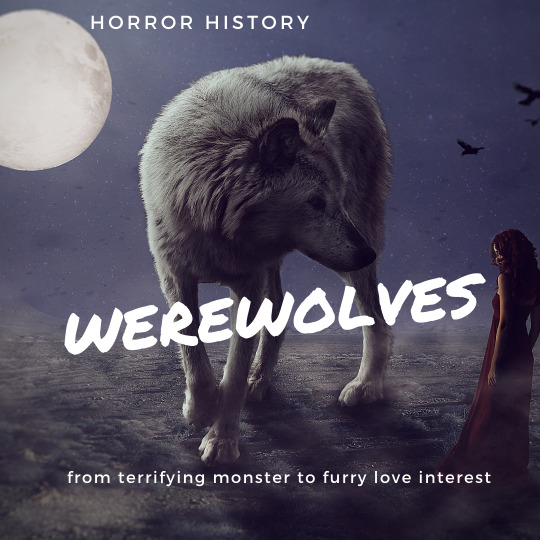
Werewolves in Folklore and Legend
Ancient Greece was full of werewolf stories. Herodotus wrote of a nomadic tribe from Scythia (part of modern-day Russia) who changed into wolves for a portion of the year. This was most likely a response to the Proto-Indo-European societies living in that region at the time -- a group whose warrior class would sometimes don animal pelts and were said to call on the spirit of animals to aid them in battle (the concept of the berserker has the same roots -- just bears rather than wolves).
In Arcadia, there was a local legend about King Lycaon, who was turned to a wolf as punishment for serving human meat to Zeus (exact details of the event vary between accounts, but cannibalism and crimes-against-the-gods are a common theme). Pliny the Elder wrote of werewolves as well, explaining that those who make a sacrifice to Zeus Lycaeus would be turned to wolves but could resume human form years later if they abstained from eating human meat in that time.
By the time we reach the Medieval period in Europe, werewolf stories were widespread and frequently associated with witchcraft. Lycanthropy could be either a curse laid upon someone or a transformation undergone by someone practicing witchcraft, but either way was bad news in the eyes of the church. For several centuries, witch-hunts would aggressively seek out anyone suspected of transforming into a wolf.
One particularly well-known werewolf trial was for Peter Stumpp in 1589. Stumpp, known as "The Werewolf of Bedburg," confessed to killing and eating fourteen children and two pregnant women while in the form of a wolf after donning a belt given to him by the Devil. Granted, this confession came on the tail-end of extensive public torture, so it may not be precisely reliable. His daughter and mistress were also executed in a public and brutal way during the same trial.
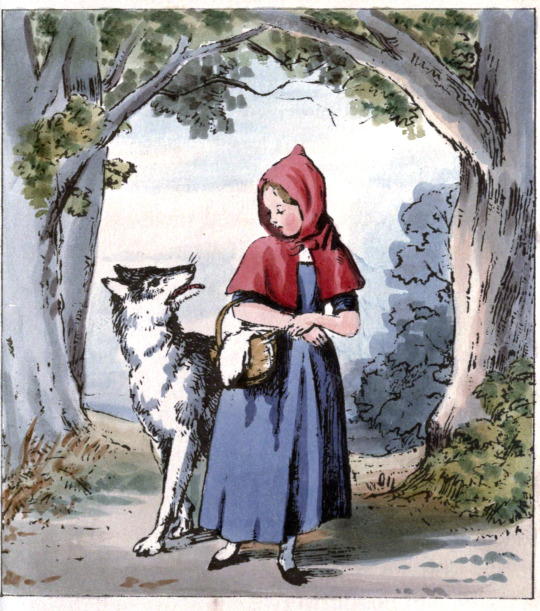
Who’s Afraid of the Big Bad Wolf?
The thing you have to understand when studying folklore is that, for many centuries, wolves were the apex predator of Europe. While wolf attacks on humans have been exceedingly rare in North America, wolves in Europe have historically been much bolder -- or, at least, there are more numerous reports of man-eating wolves in those regions. Between 1362 and 1918, roughly 7,600 people were reportedly killed by wolves in France alone, which may have some bearing on the local werewolf tradition of the loup-garou.
For people living in rural areas, subsisting as farmers or hunters, wolves posed a genuine existential threat. Large, intelligent, utilizing teamwork and more than capable of outwitting the average human, wolves are a compelling villain. Which is probably why they show up so frequently in fairytales, from Little Red Riding Hood to Peter and the Wolf to The Three Little Pigs.
Early Werewolf Fiction
Vampires have Dracula and zombies have I Am Legend, but there really is no clear singular book to point to as the "First Great Werewolf Novel." Perhaps by the time the novel was really taking off as an artform, werewolves had lost some of their appeal. After all, widespread literacy and reading-for-pleasure went hand-in-hand with advancements in civilization. For city-dwellers in Victorian England, for example, the threat of a wolf eating you alive probably seemed quite remote.
Don't get me wrong -- there were some Gothic novels featuring werewolves, like Sutherland Menzies' Hugues, The Wer-Wolf, or G.W.M. Reynolds' Wagner the Wehr-Wolf, or even The Wolf Leader by Alexandre Dumas. But these are not books that have entered the popular conscience by any means. I doubt most people have ever heard of them, much less read them.
No -- I would argue that the closest thing we have, thematically, to a Great Werewolf Novel is in fact The Strange Case of Dr. Jekyll and Mr. Hyde by Robert Louis Stevenson. Written in 1886, the Gothic novella tells the story of a scientist who, wanting to engage in certain unnamed vices without detection, created a serum that would allow him to transform into another person. That alter-ego, Mr. Hyde, was selfish, violent, and ultimately uncontrollable -- and after taking over the body on its own terms and committing a murder or two, the only way to stop Hyde’s re-emergence was suicide.
Although not about werewolves, per se, Jekyll & Hyde touches on many themes that we'll see come up time and again in werewolf media up through the present day: toxic masculinity, the dual nature of man, leading a double life, and the ultimate tragedy of allowing one's base instincts/animal nature to run wild. Against a backdrop of Victorian sexual repression and a rapidly shifting concept of humanity's relationship to nature, it makes sense that these themes would resonate deeply (and find a new home in werewolf media).
It is also worth mentioning Guy Endore's The Werewolf of Paris, published in 1933. Set against the backdrop of the Franco-Prussian war and subsequent military battles, the book utilizes a werewolf as a plot device for exploring political turmoil. A #1 bestseller in its day, the book was a big influence on the sci-fi and mystery pulp scene of the 1940s and 50s, and is still considered one of the best werewolf novels of its ilk.
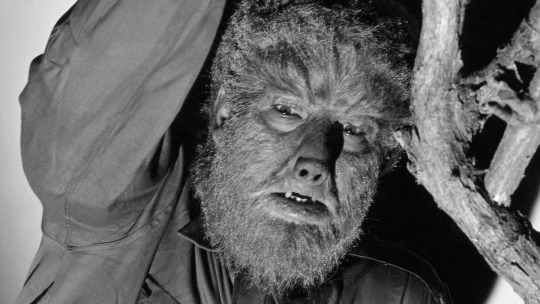
From Silver Bullets to Silver Screens
What werewolf representation lacks in novels, it makes up for in film. Werewolves have been a surprisingly enduring feature of film from its early days, due perhaps to just how much fun transformation sequences are to film. From camera tricks to makeup crews and animatronics design, werewolf movies create a lot of unique opportunities for special effects -- and for early film audiences especially (who were not yet jaded to movie magic), these on-screen metamorphoses must have elicited true awe.
The Wolf Man (1941) really kicked off the trend. Featuring Lon Chaney Jr. as the titular wolf-man, the film was cutting-edge for its time in the special effects department. The creature design is the most memorable thing about the film, which has an otherwise forgettable plot -- but it captured viewer attention enough to bring Chaney back many times over for sequels and Universal Monster mash-ups.
The Wolf Man and 1944's Cry of the Werewolf draw on that problematic Hollywood staple, "The Gypsy Curse(tm)" for their world-building. Fortunately, werewolf media would drift away from that trope pretty quickly; curses lost their appeal, but “bite as mode of transmission” would remain an essential part of werewolf mythos.
In 1957, I Was a Teenage Werewolf was released as a classic double-header drive-in flick that's nevertheless worth a watch for its parallels between werewolfism and male aggression (a theme we'll see come up again and again). Guy Endore's novel got the Hammer Film treatment for 1961's The Curse of the Werewolf, but it wasn't until the 1970s when werewolf media really exploded: The Beast Must Die, The Legend of the Wolf Woman, The Fury of the Wolfman, Scream of the Wolf, Werewolves on Wheels and many more besides.
Hmmm, werewolves exploding in popularity around the same time as women's liberation was dramatically redefining gender roles and threatening the cultural concept of masculinity? Nah, must be a coincidence.
The 1980s brought with it even more werewolf movies, including some of the best-known in the genre: The Howling (1981), Teen Wolf (1985), An American Werewolf in London (1981), and The Company of Wolves (1984). Differing widely in their tone and treatment of werewolf canon, the films would establish more of a spiderweb than a linear taxonomy.
That spilled over into the 1990s as well. The Howling franchise went deep, with at least seven films that I can think of. Wolf, a 1994 release starring Jack Nicholson is especially worth a watch for its themes of dark romantic horror.
By the 2000s, we get a proper grab-bag of werewolf options. There is of course the Underworld series, with its overwrought "vampires vs lycans" world-building. There's also Skin Walkers, which tries very hard to be Underworld (and fails miserably at even that low bar). But there's also Dog Soldiers and Ginger Snaps, arguably two of the finest werewolf movies of all time -- albeit in extremely different ways and for very different reasons.
Dog Soldiers is a straightforward monster movie pitting soldiers against ravenous werewolves. The wolves could just as easily have been subbed out with vampires or zombies -- there is nothing uniquely wolfish about them on a thematic level -- but the creature design is unique and the film itself is mastefully made and entertaining.
Ginger Snaps is the first werewolf movie I can think of that tackles lycanthropy from a female point of view. Although The Company of Wolves has a strong feminist angle, it is still very much a film about male sexuality and aggression. Ginger Snaps, on the other hand, likens werewolfism to female puberty -- a comparison that frankly makes a lot of sense.
The Werewolf as Sex Object
There are quite literally thousands of werewolf romance novels on the market, with more coming in each day. But the origins of this trend are a bit fuzzier to make out (no pun intended).
Everyone can mostly agree that Anne Rice’s Interview with a Vampire was the turning-point for sympathetic vampires -- and paranormal romance as a whole. But where do werewolves enter the mix? Possibly with Laurell K. Hamilton’s Anita Blake, Vampire Hunter books, which feature the titular character in a relationship with a werewolf (and some vampires, and were-leopards, and...many other things). With the first book released in 1993, the Anita Blake series seems to pre-date similar books in its ilk.
Blood and Chocolate (1997) by Annette Curtis Klause delivers a YA-focused version of the classic “I’m a werewolf in high school crushing on a mortal boy”; that same year, Buffy the Vampire Slayer hit the small screen, and although the primary focus was vampires, there is a main werewolf character (and romancing him around the challenges of his wolfishness is a big plot point for the characters involved). And Buffy, of course, paved the way for Twilight in 2005. From there, werewolves were poised to become a staple of the ever-more-popular urban fantasy/paranormal romance genre.
“Sexy werewolf” as a trope may have its roots in other traditions like the beastly bridegroom (eg, Beauty and the Beast) and the demon lover (eg, Labyrinth), which we can talk about another time. But there’s one other ingredient in this recipe that needs to be discussed. And, oh yes, we’re going there.
youtube
Alpha/Beta/Omegaverse
By now you might be familiar with the concept of the Omegaverse thanks to the illuminating Lindsay Ellis video on the topic (and the current ongoing lawsuit). If not, well, just watch the video. It’ll be easier than trying to explain it all. (Warning for NSFW topics).
But the tl;dr is that A/B/O or Omegaverse is a genre of (generally erotic) romance utilizing the classical understanding of wolf pack hierarchy. Never mind that science has long since disproven the stratification of authority in wolf packs; the popular conscious is still intrigued by the concept of a society where some people are powerful alphas and some people are timid omegas and that’s just The Way Things Are.
What’s interesting about the Omegaverse in regards to werewolf fiction is that, as near as I’ve been able to discover, it’s actually a case of convergent evolution. A/B/O as a genre seems to trace its roots to Star Trek fanfiction in the 1960s, where Kirk/Spock couplings popularized ideas like heat cycles. From there, the trope seems to weave its way through various fandoms, exploding in popularity in the Supernatural fandom.
What seems to have happened is that the confluence of A/B/O kink dynamics merging with urban fantasy werewolf social structure set off a popular niche for werewolf romance to truly thrive.
It’s important to remember that, throughout folklore, werewolves were not viewed as being part of werewolf societies. Werewolves were humans who achieved wolf form through a curse or witchcraft, causing them to transform into murderous monsters -- but there was no “werewolf pack,” and certainly no social hierarchy involving werewolf alphas exerting their dominance over weaker pack members. That element is a purely modern one rooted as much in our misunderstanding of wolf pack dynamics as in our very human desire for power hierarchies.
So Where Do We Go From Here?
I don’t think sexy werewolf stories are going anywhere anytime soon. But that doesn’t mean that there’s no room left in horror for werewolves to resume their monstrous roots.
Thematically, werewolves have done a lot of heavy lifting over the centuries. They hold up a mirror to humanity to represent our own animal nature. They embody themes of toxic masculinity, aggression, primal sexuality, and the struggle of the id and ego. Werewolf attack as sexual violence is an obvious but powerful metaphor for trauma, leaving the victim transformed. Werewolves as predators hiding in plain sight among civilization have never been more relevant than in our #MeToo moment of history.
Can werewolves still be frightening? Absolutely.
As long as human nature remains conflicted, there will always be room at the table for man-beasts and horrifying transfigurations.
--
This blog topic was chosen by my Patreon supporters, who got to see it one week before it went live. If you too would enjoy early access to my blog posts, want to vote for next month’s topic, or just want to support the work I do, come be a patron at https://www.patreon.com/tlbodine
51 notes
·
View notes